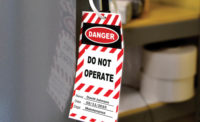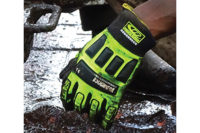If you don't feel qualified to conduct a comprehensive audit yourself, use an external source or consultant. Either way, this article describes five keys to conducting an effective audit.
1 Prepare the organization
A tentative and very flexible audit schedule must be reviewed and established. Areas to be covered in the audit should be highlighted and may include: management support and direction, regulatory issues, incident investigations, procedures, practices, and training.Materials and documentation such as manuals, training records, loss data, and industrial hygiene studies should be reviewed to better prepare the organization and auditor/evaluator for the review.
Key stakeholders who will be required to support this effort should be made aware of the schedule and be made available for opening conferences, closing conferences, and possibly, for stakeholder interviews.
2 Conduct an opening conference
What should be expected at the opening conference? Each individual in attendance should be assured that the review is for their benefit and that whoever is conducting the audit, whether it's you or a consultant, is 'one of them.' If necessary, a teleconference can be set to include any individuals who cannot be present.The schedule should be reviewed to allow each person to understand the scope and the rigors of the audit. Categories or elements to be covered and some examples should also be discussed, particularly if this is a first-time review. If qualitative and quantitative methods are used, scoring should also be addressed. For example, what constitutes a good score, or a challenging score? What should be expected in terms of follow-up? If a 'daily report-out' can be used to cover elements addressed each day, it should be agreed upon during the opening conference. Often, this can work very well.
3 Communicate regularly
At the start of each day during the audit process, key contacts in the organization should be briefed on what happened the day before, as well as what will be covered that day. This is also an important time to talk about changes in the schedule. Remember, you need to remain very flexible throughout the audit. Time will have to be set aside to interview workers on the floor, to observe work practices, and to review documentation such as training and procedures.4 Assess progress
At the end of the day or shift, it's important to assess how the audit schedule is being met. Are the times appropriate, or will the schedule have to change? Any conditions or practices that could be considered dangerous should be addressed immediately.5 Conduct a closing conference
The closing conference is as important as the opening one. Each of the stakeholders and respective organizational representatives who attended the opening conference should be present. Again, the major categories of the audit are addressed with the positive aspects acknowledged as well as the challenges that might impede progress.Each 'challenge' should include some form of recommended action. Immediate concerns should be noted and discussed so there are no 'surprises.' Comments regarding worker and stakeholder interviews should also be discussed in brief. Before closing, time must be provided for an open discussion and questions.
Finally, the following issues should be resolved: When will the report be completed? Who will it be sent to? What is the desired way for it to be handled internally?
Closing comments
Conducting audits can help initiate management support for various organizational functions, such as quality, human resources, and safety. Sometimes consultants might be needed to provide new insights, or reinforce what you've been saying all along. Either way, be patient, it can take months for the results of the audit to generate momentum. But these reviews might be what you need to move safety ahead.By David J. Sarkus, MS, CSP, a health and safety consultant specializing in behavior-based interventions and safety management evaluations. Based in Monongahela, Pa., Dave can be reached at (724) 379-6439; djsark@usaor.net; www.mvid.com/davidsarkus.

